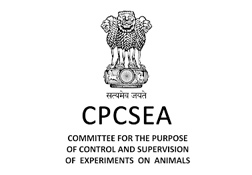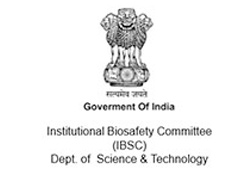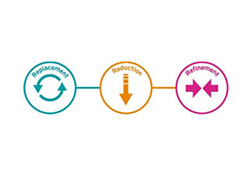Understanding the MTT Assay for Cytotoxicity Testing of Medical Devices
Introduction :
ISO 10993-5 is a standard that provides guidance on in vitro cytotoxicity testing of medical devices. The MTT (3-(4,5-dimethylthiazol-2-yl)-2,5-diphenyltetrazolium bromide) assay is a commonly used method for assessing the cytotoxic potential of materials and extracts from medical devices .
The MTT assay essentially measures the ability of cells to change the yellow MTT dye into a purple formazan product to determine their viability. This color change offers important information about the possible effects of medical device components on live tissues and is a dependable sign of cellular metabolic activity.

Here are the general steps for conducting a quantitative MTT assay in accordance with ISO 10993-5:
Objective and Scope:
Clearly define the objective of the MTT assay for the specific medical device or test material. Identify the scope of the test, including the type of cells to be used and the duration of exposure.
Selection of Cell Line:
Choose an appropriate cell line that is relevant to the intended use of the medical device. Commonly used cell lines include L929 (mouse fibroblasts) or other relevant cell lines specified in ISO 10993-5.
Cell Culture:
Culture the selected cell line according to established protocols. Ensure that the cells are in the logarithmic growth phase before initiating the MTT assay.
Preparation of Test Material Extracts:
Prepare extracts of the medical device or test material according to ISO 10993-12. Use an appropriate extraction medium and ensure that the extraction conditions mimic the physiological conditions the device may encounter during clinical use.
Exposure of Cells to Test Material:
Expose the cultured cells to different concentrations of the test material extracts. Include positive and negative controls, such as known cytotoxic and non-cytotoxic substances.
Incubation:
Incubate the cells with the test material extracts for a specified duration, typically 24 to 72 hours, depending on the protocol and the nature of the medical device.
MTT Assay:
Add the MTT solution to the cells and incubate further. The viable cells will convert MTT into formazan, producing a color change. Terminate the reaction by adding a solubilizing agent.
Spectrophotometric Measurement:
Measure the absorbance of the formazan product using a spectrophotometer. The absorbance is directly proportional to the number of viable cells.
Data Analysis:
Analyze the data, calculate the cell viability, and compare the results obtained with different concentrations of the test material to determine its cytotoxic potential.
Reporting:
Prepare a comprehensive report summarizing the experimental design, test conditions, concentrations tested, absorbance values, cell viability calculations, and conclusions. Include any relevant information on the medical device, its composition, and processing conditions.
Quality Assurance and Compliance:
Ensure that the testing is conducted in compliance with ISO 10993-5 and any additional regulatory requirements. Implement robust quality assurance measures to maintain the integrity and reliability of the test results.
Conclusion
Laboratories conducting MTT assays for cytotoxicity assessment should have expertise in cell culture techniques and follow relevant guidelines to ensure accurate and reliable results.
Through systematic procedures, including cell line selection, material extraction, and data analysis, the assay aids in identifying potential risks associated with medical device usage. Upholding quality assurance measures and regulatory compliance enhances the reliability of cytotoxicity assessments. Ultimately, the MTT assay contributes to advancing biocompatibility evaluation, fostering safer medical device development, and promoting patient welfare.




